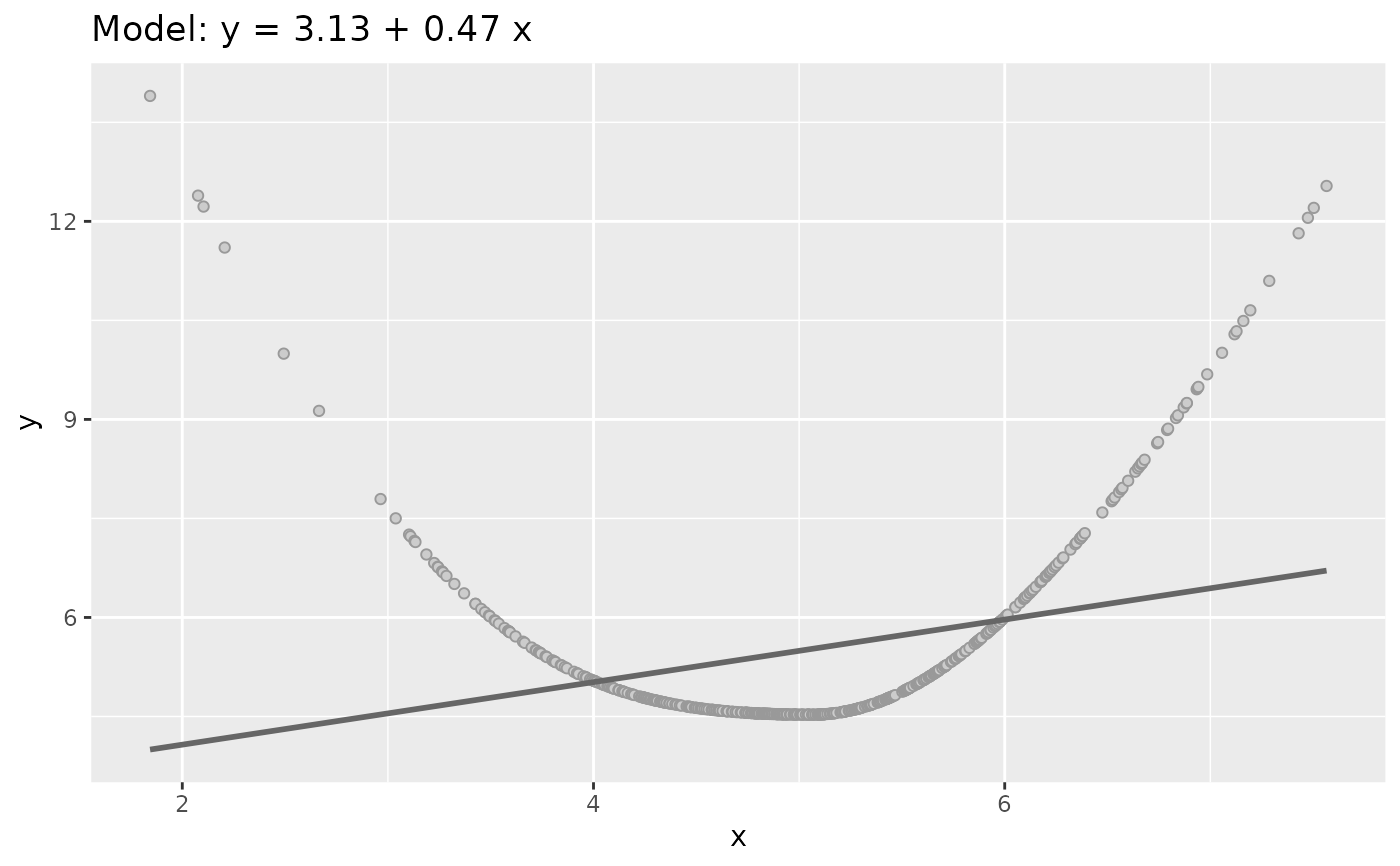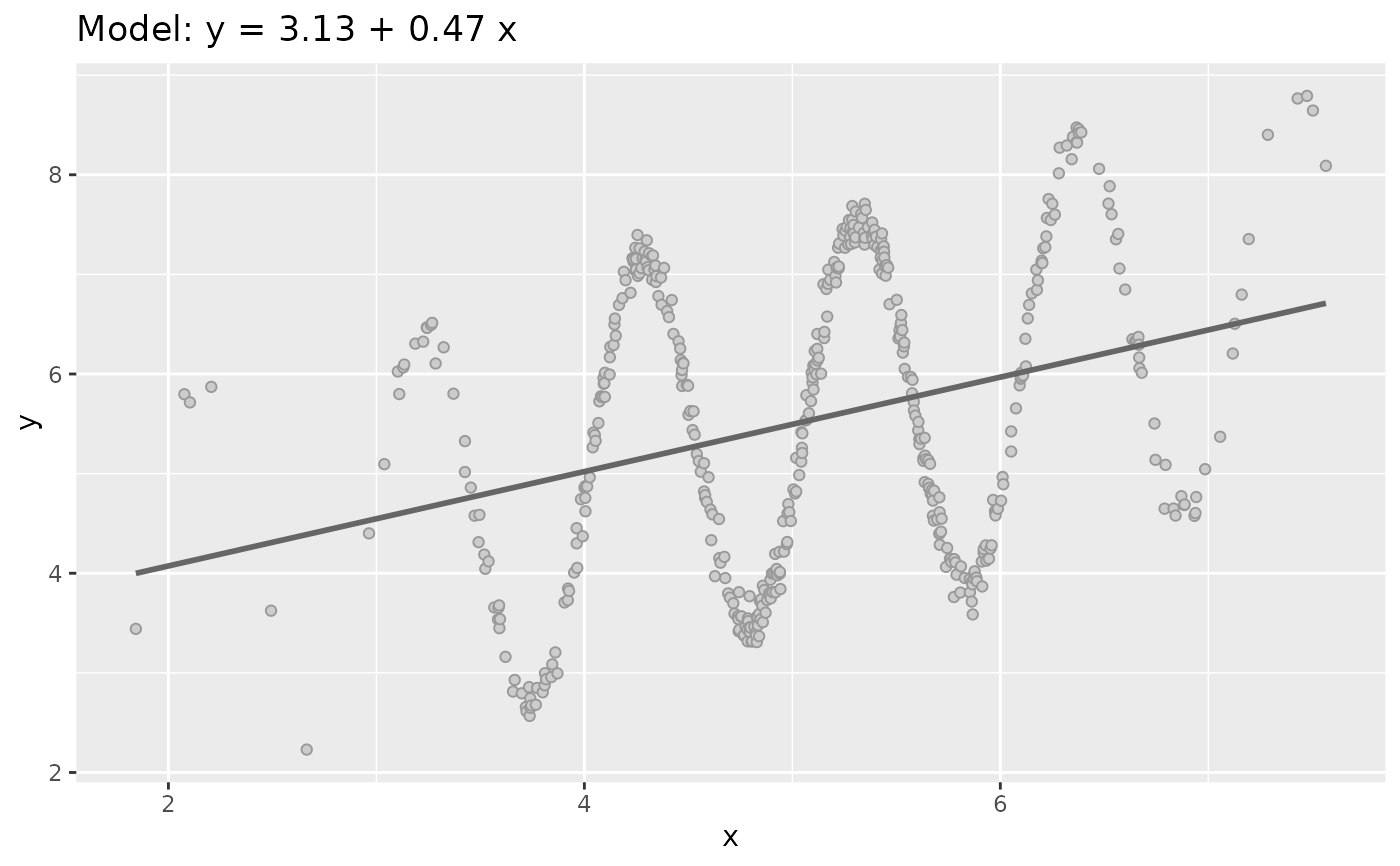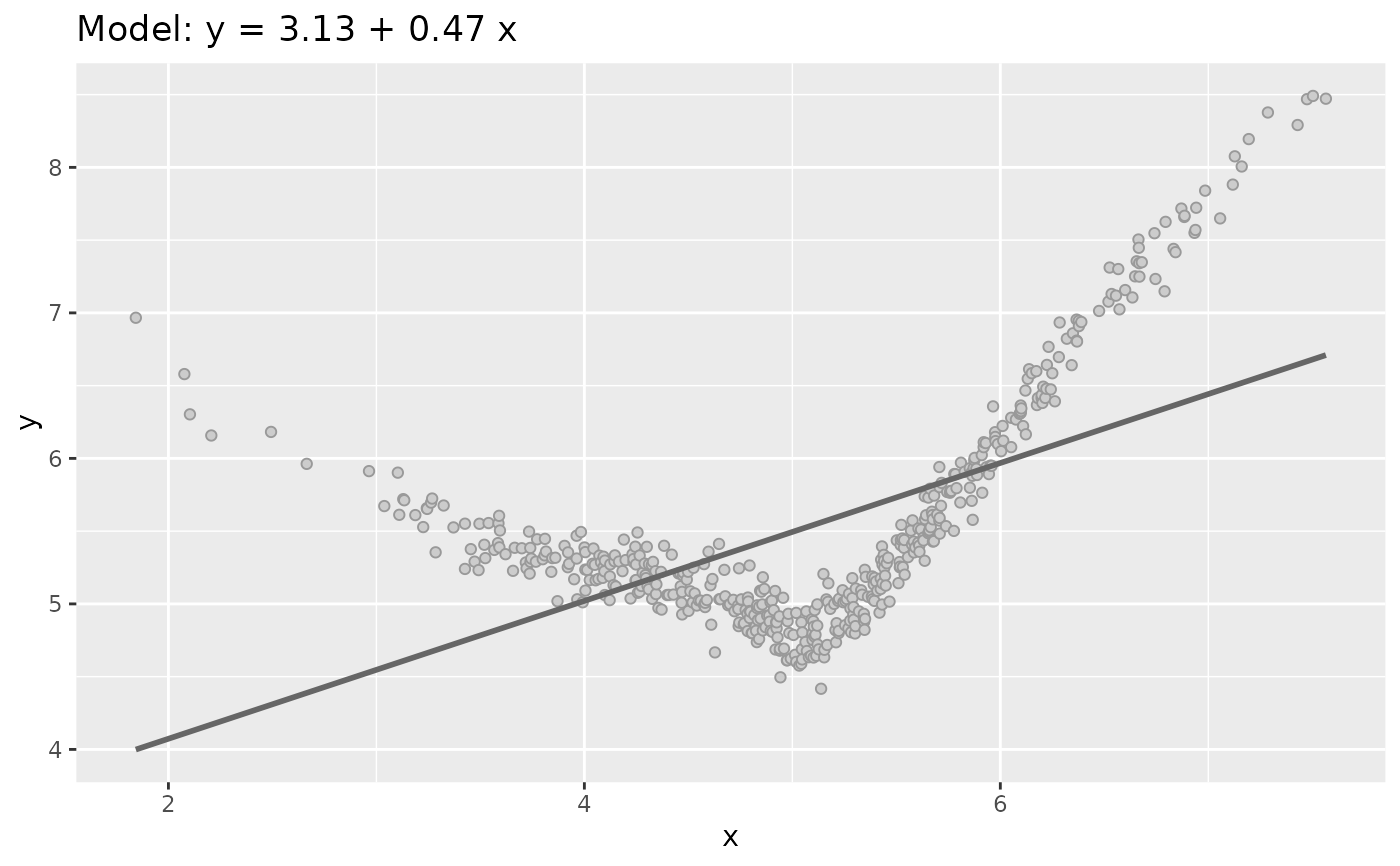Generate quasi Anscombe data sets Type 2: No linear relationship
Source:R/quasianscombe.R
sim_quasianscombe_set_2.RdData sets Type 2 shows how a no linear realtionship between x and y can
lead in the same regression model (in terms of parameter values) of
the Type 1.
Arguments
- df
A data frame from
sim_quasianscombe_set_1(or similar).- fun
A function to apply, this is applied to normalized version of
x.- residual_factor
Numeric value to multiply residual to modify their variance.
Examples
df <- sim_quasianscombe_set_1()
dataset2 <- sim_quasianscombe_set_2(df)
dataset2
#> # A tibble: 500 × 2
#> x y
#> <dbl> <dbl>
#> 1 1.84 14.1
#> 2 2.08 12.4
#> 3 2.10 12.0
#> 4 2.21 11.3
#> 5 2.49 10.0
#> 6 2.67 9.09
#> 7 2.96 7.95
#> 8 3.04 7.47
#> 9 3.10 7.50
#> 10 3.11 7.19
#> # … with 490 more rows
plot(dataset2)
 plot(sim_quasianscombe_set_2(df, residual_factor = 0))
plot(sim_quasianscombe_set_2(df, residual_factor = 0))
 fun1 <- function(x){ 2 * sin(x*diff(range(x))) }
plot(sim_quasianscombe_set_2(df, fun = fun1))
fun1 <- function(x){ 2 * sin(x*diff(range(x))) }
plot(sim_quasianscombe_set_2(df, fun = fun1))
 fun2 <- abs
plot(sim_quasianscombe_set_2(df, fun = fun2))
fun2 <- abs
plot(sim_quasianscombe_set_2(df, fun = fun2))
 fun3 <- function(x){ (x - mean(x)) * sin(x*diff(range(x))) }
plot(sim_quasianscombe_set_2(df, fun = fun3))
fun3 <- function(x){ (x - mean(x)) * sin(x*diff(range(x))) }
plot(sim_quasianscombe_set_2(df, fun = fun3))
